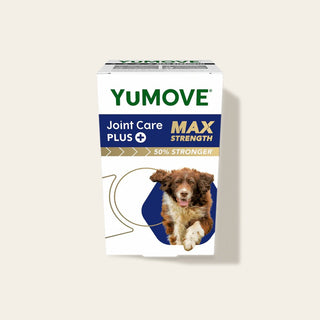

Hydrotherapy For Dogs
Although dogs have been launching themselves with abandon into lakes, ponds and muddy puddles for millennia, canine hydrotherapy is a fairly recent development.
What is dog hydrotherapy?
Under the guidance of a trained canine hydrotherapist, your dog swims or walks in warm water to help improve their fitness and function. Sessions usually take place either in a swimming pool or in a special tank (not unlike a giant fish tank) that contains a custom-made treadmill.
Good for stiff joints
Canine hydrotherapy is used for a variety of reasons, such as soothing stiff joints, improving mobility and cardiovascular fitness, and helping your dog to maintain a healthy weight.
“The benefits of canine hydrotherapy depend very much on how the therapy is carried out,” says Adam Gibbins, Chairman of the National Association of Registered Canine Hydrotherapists (NARCH).
“For some dogs, simply floating or swimming gently in water can relieve stiff joints. For others, more vigorous exercise is used to increase the use of limbs, increase muscle bulk and tone, and strengthen the support for joints.”
He adds:“Water can also be used as a means of supporting dogs in a non-weight bearing or partially weight bearing environment to allow movements that would not be possible on land, perhaps because of weakness or injury. This is particularly useful for dogs that have spinal problems.”
The science bit
Canine hydrotherapy works due to the properties of water, specifically its:
- Buoyancy – water reduces the pressure on your dog’s joints, bones and muscles, allowing your pooch to exercise more easily than they could on land.
- Viscosity – water is resistant to movement, so while your dog benefits from the buoyancy of water, this resistance also helps them to strengthen their muscles and improve their fitness.
- Hydrostatic pressure – the pressure of water against your dog’s body supports their joints and muscles, helps increase their range of movement and can improve circulation.
Typically, canine hydrotherapy takes place in warm water that’s between 28-32 degrees, which is the optimum temperature to help soothe stiff joints and encourage relaxation.
What happens in a hydrotherapy session?

“A typical maintenance hydrotherapy session starts with an update from the owners about how the dog has been and any activity that they’ve been undertaking,”says Adam Gibbins. “The therapist will give your dog a warm shower and a massage to prepare the muscles.”
“In the pool, each session is tailored to meet the dog’s specific needs and abilities. It’s highly likely you’ll see controlled swims with the dog working in different directions, with physical input from the therapist to support and improve the dog’s range of motion.”
“Throughout the session, the hydrotherapist makes observations and adjustments to how your dog is moving in order to improve their condition. Afterwards, your dog is showered once again to remove pool water from their coats. They are then towel dried, which has a massaging effect, which dogs adore.”
In other words, your dog has a lovely session of showers and massages, with hydrotherapy exercise in the middle.
Suitable for (almost) every dog
Adam says that hydrotherapy is appropriate for all dogs, cats and small animals. However, he admits that:“Some dogs may be truly hydrophobic – scared of water – and in that case we would never proceed. Lots of dogs are uncomfortable with water and it’s the role of the hydrotherapist to work with the dog and build their confidence.”
Canine hydrotherapy is not recommended for dogs with ear infections or skin conditions. In addition, the Canine Hydrotherapy Association recommends paying particular care to breeds who may find it more difficult to breathe comfortably in water under aerobic conditions.
Staying afloat isn’t swimming!
Talking about dogs and water more generally, Adam says it’s a misconception that all dogs can swim. “Many dogs can throw themselves in the water and stay afloat, but that’s not swimming! Dogs can tire easily and could be at risk of drowning in an outside open water environment. If that’s your dog, ensure you manage their access to water and use buoyancy aids to reduce the risk.”
How to find your canine hydrotherapist
Any canine hydrotherapist will need to have approval from your vet before they start a course of therapy. So talk to your vet first and see if there’s anyone they would recommend.
You should also make sure that your therapist is registered with either the National Association of Registered Canine Hydrotherapists or the Canine Hydrotherapy Association.
Has your dog taken the plunge?
Have you tried canine hydrotherapy for your pooch? How did you find it? Please share your experiences and pictures of your brave furry friend doing the underwater doggy paddle on our Facebook and Instagram pages.




